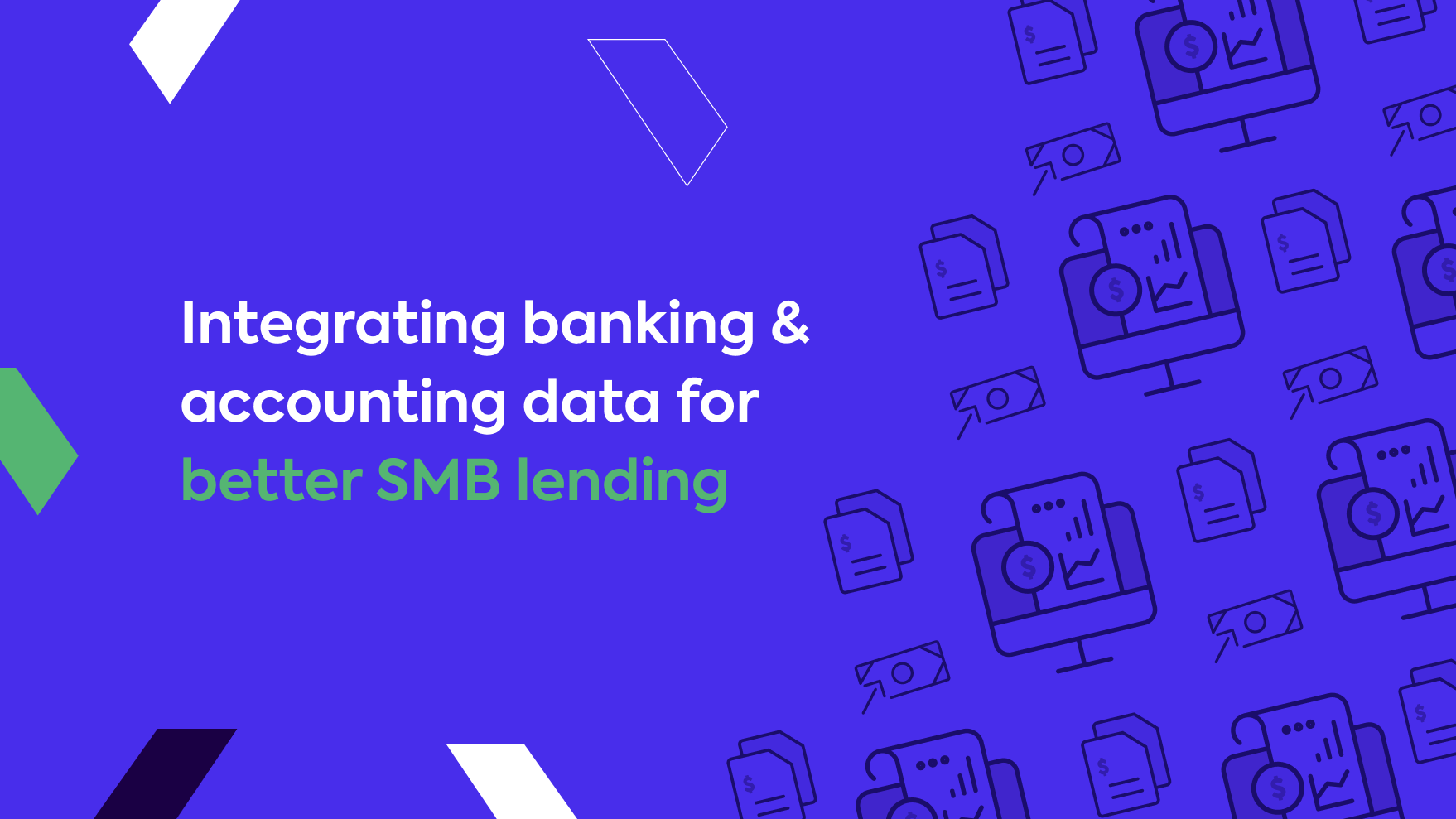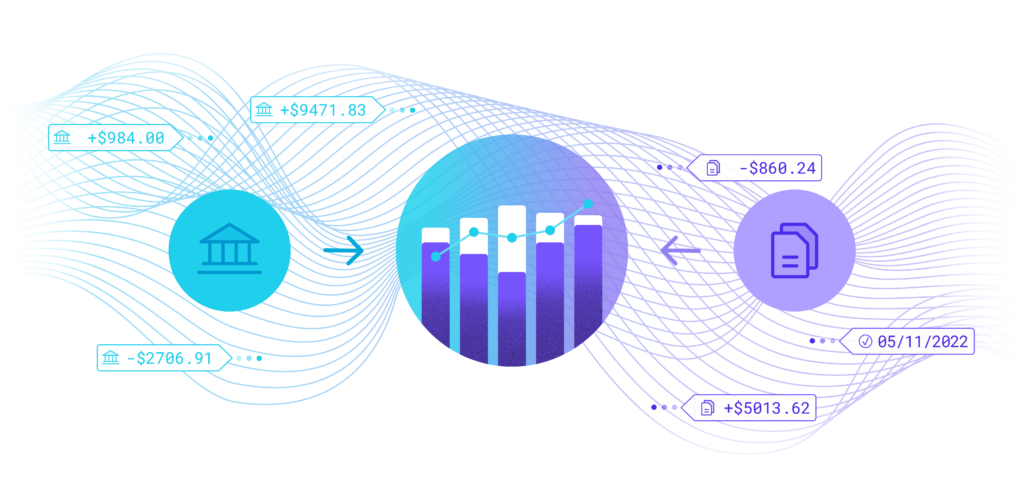
Taking a comprehensive approach to business data helps lenders make smarter, faster, and more confident credit decisions.
When it comes to underwriting financial services for SMBs, lenders and other credit providers have traditionally had limited criteria to go on, like a company’s annual revenue and credit history or a business owner’s personal credit score.
With the recent surge in open banking models and fintech solutions, it’s becoming easier for lenders to connect to the finance platforms used by SMBs and access alternative data like banking and accounting information. That allows them to gain deeper insights into potential borrowers and ultimately make stronger, smarter credit decisions.
It’s common (but unwise) for lenders to assume they can get all the data they need from a single source like bank statements.
If they want to extend lower interest rates, appeal to a broader market, or serve larger businesses, they need to be able to evaluate finances holistically and consider banking and accounting data in tandem.
In this post, we cover what banking and accounting data have to offer on their own, how they can work together to paint a fuller, more accurate picture of SMB finances, and how the best APIs on the market enable modern lenders to access and analyze both seamlessly.

The value of banking data
Lenders are often interested in seeing an overview of all the financial accounts an SMB holds.
That’s where banking data comes in. It allows lenders to lift the hood on a business’s finances and get a view into actual transactions, including information on:
- Incoming, outgoing, and overdrawn funds.
- Balances held with other lenders.
- Incomplete or bounced payments.
- Money directed to risky endeavours like gambling or adult entertainment.
- Average invoice or bill value.
- Who an SMB trades with and how often.
The upside to banking data is that it comes from an external, independent source, so it offers a reliable, immutable financial record that lenders can trust—that is, one that can’t be edited or altered after the fact by the company in question.
The downside? When it comes right to it, banking data just shows the who and how much of each transaction, without any explanation. So it’s difficult to tell whether a payment is for the correct amount, for instance, or whether it was paid on time.
That critical context is where accounting data comes in.
The value of accounting data
The accounting system is often the financial hub of a business, where all debits and credits are aggregated and categorized in the general ledger. Consulting this centralized data allows lenders to better understand how and when a company makes payments, identify red flags that could indicate impending bad debt, and take a proactive approach to minimize losses.
When dealing with larger companies—which are more likely to use multiple banking products and have complex payment terms with both customers and suppliers—accounting data can also help lenders cut through the noise and get a clearer view of cash flow.
Among other attributes, accounting data can help a lender size up a potential customer’s:
- Typical payment terms.
- Average days to pay.
- Concentration or percentage of each customer and supplier.
- Paid vs. outstanding costs.
- P&L statements and balance sheets.
- Average invoice or bill value.
Still, accounting data is user-generated, meaning business teams can go in and alter the numbers at any time—leaving it vulnerable to manipulation, poor bookkeeping, human error, and (worst of all) fraud. That’s why banking data is essential to back up every detail and detect any discrepancies.
Integrating data sources for better SMB lending and credit decisioning
When it comes to assessing an SMB’s financial health and creditworthiness, banking data provides the hard facts and figures, while accounting data fills in the contextual background, gives lenders a glimpse into a company’s operational rhythms and cash flow management, and pulls details from across accounts and contracts.
One way banking data and accounting data work together is to protect lenders from loan stacking—or the practice of taking out multiple loans or lines of credit from many lenders at once to exploit delays in credit reporting.
If a lender relies on banking data alone, a business could simply stop paying suppliers and creditors to maximize their cash balance. That would land them a high score during the underwriting process and a substantial loan they’d use to pay off overdue debts. From there, it’s rinse and repeat, leaving various lenders in the lurch.
Adding accounting data would clue lenders into the creditor pressure behind this scheme—as well as the general integrity of the business—and empower them to avoid unnecessary risk.
Integrating banking and accounting data
Selecting the right data provider is integral to making this equation work.
Most APIs specialize in a specific data type (e.g., banking or accounting) or geographical region. Connecting to different data sources (e.g., banking and accounting) could mean juggling several vendors, integrations, and subscription fees to cover all your bases—and it’s no guarantee that any two will play well together.
The best bet for modern lenders is to go with a provider that implements accounting, banking, and ideally other data connections through one platform, so they can realize the full benefits of API connectivity without the added costs and friction.
The top providers also have automated features that match a company’s accounting records to their banking data, flagging any loose ends.
For lenders, that makes the underwriting process not only secure, but smart and simple. Using these two data sources together means their records can be easily cross-referenced to ensure the accuracy of the accounting data and unlock opportunities for deeper analysis.
How Codat can help
Codat’s business data APIs unite and connect accounting, banking, and commerce data on a single platform, with a built-in, automated data integrity engine to take the hassle out of reconciliation.
To learn more about our solutions, sign up for a free account—or get in touch with a Codat specialist by filling out the form below.